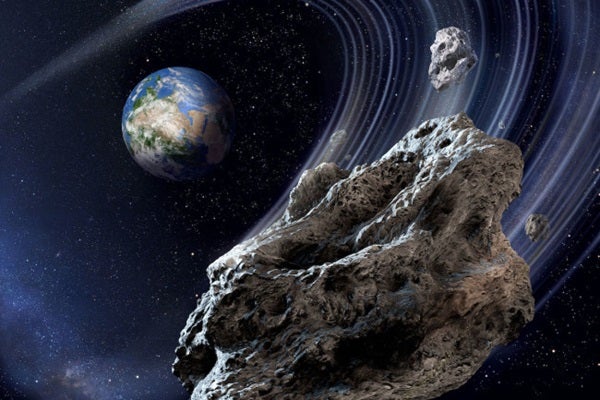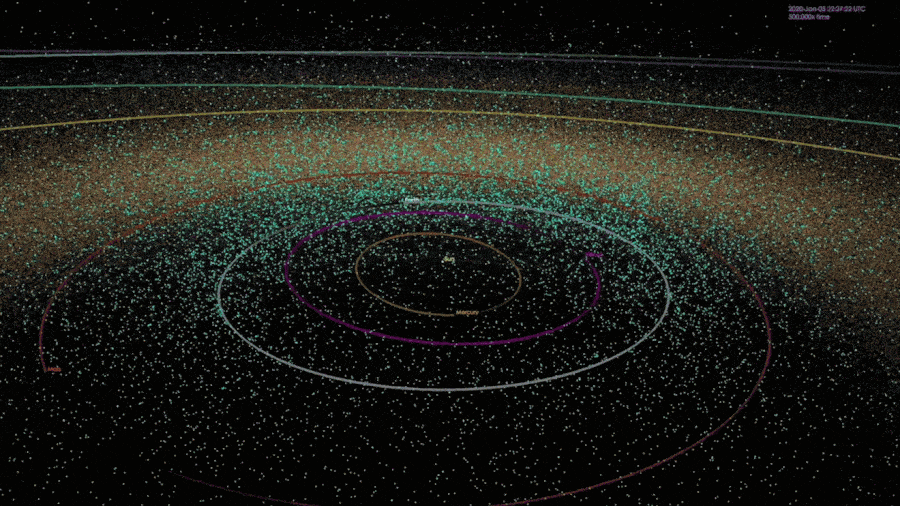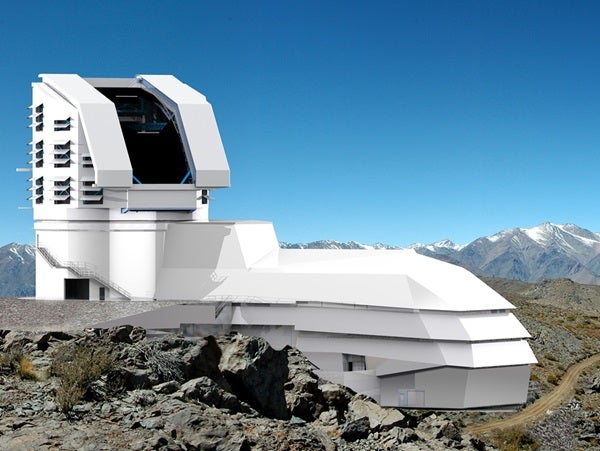Last year, NASA’s DART mission made headlines after it successfully smashed into the side of Dimorphos, the small orbiting companion of a larger asteroid named Didymos. That planned impact measurable changed the orbit of Dimorphos, heralding a new chapter in humanity’s ability to defend itself from cosmic threats.
One small problem: We have very little idea of what those threats are and where they might come from. Thankfully, NASA is hoping to change that.
How many near-Earth asteroids are there?
To put it mildly, rogue asteroids pose a major threat to our survival here on Earth. The largest asteroids — those larger than 0.6 miles (1 kilometer) across — are capable of triggering extinction-level events on Earth. However, large asteroids are relatively rare, striking Earth only every half-million years or so.
What’s more concerning are the smaller, much more numerous asteroids that are less than 0.6 miles (1 km) across. While those won’t destroy a civilization, they could still take out a major city or two, or trigger globe-spanning tsunami waves.
In 2005, the U.S. Congress decided that NASA should up its asteroid-detection game. Congress mandated that NASA identify, track, and characterize 90 percent of near-Earth objects (NEOs) with a diameter greater than 560 feet (140 meters). That’s so large that truly catastrophic things would happen should such an asteroid strike Earth.
There was a deadline for the mandate, too: NASA was directed to accomplish the NEO-detection effort by 2020.
One catch, however. Despite the clear directive, Congress didn’t authorize any additional funding for NASA to actually accomplish it.
NASA pushes for planetary defense
As the 2020 deadline loomed, the clever folks at NASA got creative. Instead of relying only on ground-based surveys, which were slow and difficult to fund, they prioritized new spaceflight missions, helping them sell the concept of planetary defense to Congress.
It worked. Congress approved the funding for DART a year before NASA even formally proposed it.
Along with DART also came a repurposing of the defunct WISE spacecraft, which had been sitting dormant in orbit for several years. Now called NEOWISE (for near-Earth Object Wide-field Infrared Survey Explorer), the rebranded instrument is now NASA’s go-to facility for finding potential threats to Earth.
At the latest count, as of the writing of this article, NEOWISE and other ground-based telescopes have identified 859 NEOs larger than 0.6 miles (1 km) across, 10,398 NEOs larger than 560 feet (140 meters) across, and 31,247 NEOs of all sizes.
In total, that accounts for roughly 35 percent of all the estimated NEOs out there. And although valuable, that number still falls far short of the congressional mandate to identify 90 percent of NEOs.
Plenty more hazardous asteroids left to find
In response, NASA is rushing forward with new programs and partnerships.
For instance, the Legacy Survey of Space and Time (LSST) of the upcoming Vera Rubin Observatory should be able to locate 90 percent of all NEOs greater than 1,000 feet (300 m) across.
Meanwhile, the successor to NEOWISE, currently called NEO Surveyor, was rushed through the funding approval process outside of the usual competitive proposal channels. NEO Surveyor is now planned for launch in 2028, and its mission will be to complete the congressionally mandated NEO census.
But while these instruments will identify and track potentially hazardous asteroids, they will still fall short in one key area: characterization.
It’s one thing to identify a smudge of bright pixels as an asteroid and follow its motion for a few weeks to estimate its orbit, which is something future observatories will do with ease. However, it’s a completely different thing to closely study the asteroid to determine its shape, surface features, and composition.
Knowing these characteristics is essential to accurately assessing the danger of an asteroid. And that danger doesn’t just come from a potential intersection of orbits based on initial observations of the asteroid. The detailed shape and brightness of an asteroid can radically change its initially predicted orbit due to uneven heating from the Sun.
In other words, without NEO characterization, we really don’t get a full picture of what kind of threat an asteroid might pose to Earth.
What characterizing asteroids can teach us
If an asteroid does present itself as a threat to our planet, the first thing we’ll want to know is the asteroid’s composition.
Many asteroids are “rubble piles,” with small bits of rocks only loosely held together by their own gravity. These rubble-pile asteroids are particularly hard to destroy, as they act like giant space cushions when something strikes them. Other asteroids are rich in metals and are incredibly dense.
A DART-like mission to save Earth from an asteroid strike would vary greatly depending on whether the object was a rubble pile or a dense, metal-rich object. An asteroid’s composition also plays an important role in what would happen should the asteroid strike Earth — it might just break apart in our atmosphere or it could bury itself deep in Earth’s crust.
Many astronomers have floated proposals to help get a better handle on NEO compositions. One such proposal is for an array of small satellites flying in a constellation in low-Earth orbit, each equipped with visible and infrared sensors to continuously monitor newly identified NEOs and develop models of their surface compositions and structures.
However, it will take several more years for upcoming NEO observatories to come online and complete these surveys. So, in the meantime, keep your fingers crossed.












